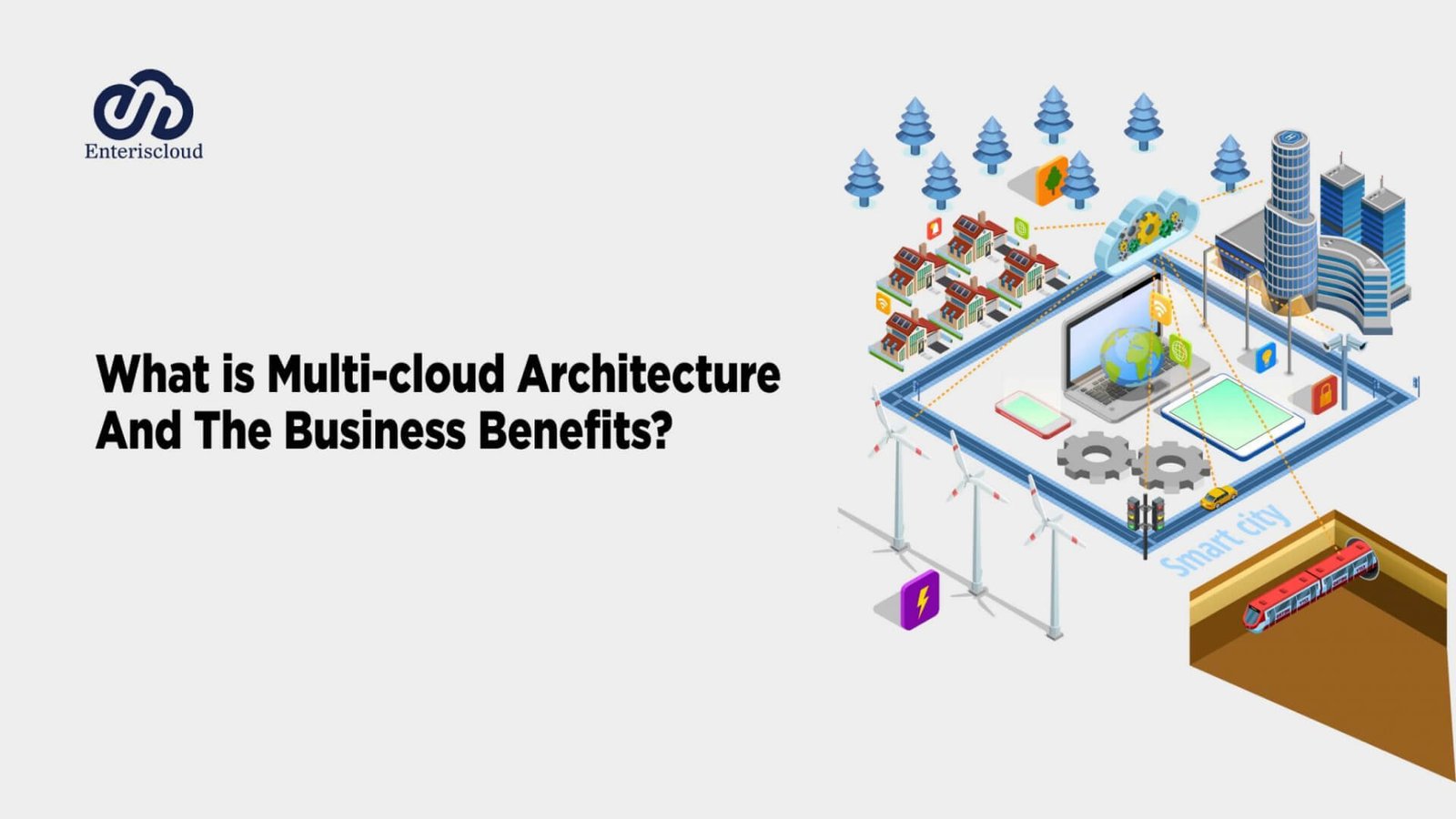

So before moving ahead with our questions and concerns, let’s have a quick look over the basic concept of exactly what is multi-cloud architecture.
What is Multi-cloud Architecture: Check its Business Benefits
A multi-cloud architecture leverages services from various cloud providers to gain business benefits such as increased innovation, access to specialized hardware that is not accessible on-premises, and the capacity to extend computation and data storage as the organization grows.
A multi-cloud approach may include a combination of public cloud and private clouds or numerous public cloud providers working as one.
Resilience is provided through a multi-cloud architecture. Using a dispersed distribution for apps allows you to use cloud computing environment characteristics for maximum efficiency.
With the help of various clouds and services and adapting apps to their capabilities will always result in more efficient and better outputs. For instance, one cloud’s superior GPUs for specialized workloads and a separate cloud’s best-in-class analytical engine.
A multi-cloud architecture is logical for a variety of reasons. You may employ the newest innovations in technologies and services, adopt a pay-as-you-go approach for the resources you utilize, and migrate across clouds as they compete in an advanced environment and pricing by utilizing the best cloud for each job.
By splitting your workloads, you may save expenses, increase resilience, and protect your sensitive data.
The Benefits of a Multi-Cloud Architecture
Now the question is “Why Should You Use a Multi-Cloud Environment?”. And the answer cannot be given in a single line. Risk management is a key benefit of a multi-cloud architecture. If one cloud provider’s system goes down, you may instantly switch to another vendor until the service is restored. Viola – Problem solved!
There are, however, additional advantages to employing a hybrid multi-cloud architecture. Let’s dive into the details:
- If business users are dispersed, adopting different cloud service providers due to proximity might boost performance.
- Because your leading cloud provider may not have a footprint in places where data must be kept in-country, using a second cloud provider there will satisfy data localization rules.
- Keep your research and deployment processes separate from your manufacturing environment.
- Adding public cloud features and scalability to data centers
- Keeping seller lock-in at bay
- Hosting programs at the most convenient location for end-users
Deploying in a Distributed Environment
Tiered cloud migration of programs and data can be cost-effective to handle your resources.
Multi-cloud strategies and hybrid multi-cloud architecture are frequently used by businesses to operate mission-critical and confidential apps in a cloud infrastructure while shifting less essential tasks to a public cloud for enhancing overall performance.
Hybrid Cloud on Multiple Levels
In a multi-cloud scenario, you may wish to isolate front-end apps from backend applications.
Applications for the Front-end
Front-end apps are closest to end-users and require frequent changes. These apps often handle the client or user interface but do not directly hold large quantities of data.
This is required for keeping the user engaged on your site for a longer time.
Application for the Backend
Backend apps, on the other hand, are usually all about data. It must be managed and secured. Front-end apps would be moved to the public cloud in a layered hybrid cloud system, whereas backend applications would be kept in a more encrypted VPN cloud and on.
Some workloads, such as data for analytics that is transferred up to the cloud for processing because the latency to draw from on-premises servers is too high, are better suited to the cloud. Other data is more sensitive or subject to compliance laws, necessitating on-premises storage.
Final Verdict – What Can It Bring To Your Business?
Now, you must have understood what is Multi-cloud Architecture, its use, and its benefits. Establishing a multi-cloud approach offers several business benefits if firms take the time to develop and create the necessary architecture.
Too many firms shift to multi-cloud on the fly. They put on new cloud services or solutions rather than taking the time to assess and carefully construct the optimal option.
Despite the fast use of cloud computing, many cloud ventures fail due to inadequate planning. According to IDC research, just 11% of businesses have maximized their cloud deployment.
This is why, prior to execution, you must explicitly define the scope of your multi-cloud approach. Your multi-cloud architecture should be built with a strategic eye toward discovering and prioritizing use cases that correspond with your business objectives. Taking a step back and designing from the ground up is often the best method.



